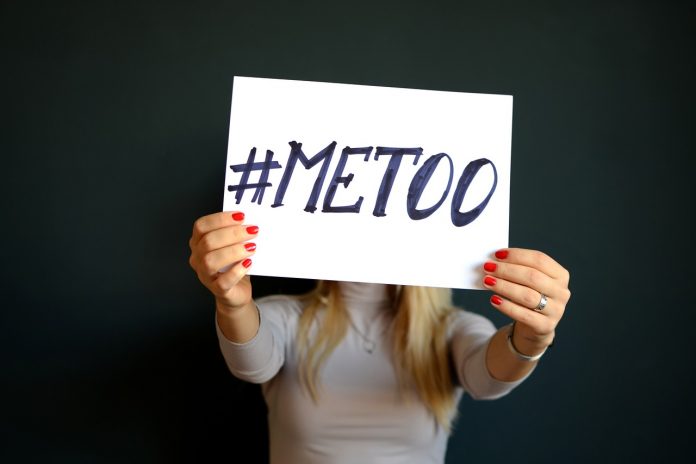Protesting social issues is becoming a trend. In the wake of the Harvey Weinstein scandal, actress Alyssa Milano brought attention to the awareness campaign #MeToo, so women across the globe could show just how prevalent sexual assault is. The hashtag was created by activist Tarana Burke 10 years ago, but has quickly gained mainstream attention since Milano’s October 15 tweet, with victims of sexual assault posting the hashtag on social media, often with their personal stories.
Though I am a victim of sexual assault myself, I have not supported the #MeToo trend. While it does spread awareness, I thought it presented sexual assault as a women’s issue and focused on the problem, rather than solutions. I set out to write this article about the trend of unjustly blaming men, when everyone is at risk of sexual assault. I was wrong. The more research I did, the further I realized my opinion was from the truth. According to Stats Canada, “Of all sexual assault incidents, the vast majority (87 per cent) were committed against women.” Furthermore, “Of all sexual assault incidents, nearly half (47 per cent) were committed against women aged 15 to 24.”
When your own government reports that women are at a higher risk, there’s no point arguing. Revising my position, I came to realize how significant the #MeToo movement actually is. For the first time in history, women across the globe are bringing attention to sexual assault, and it’s being discussed online, in the media, and in our daily lives. While #MeToo doesn’t solve the issue, it forces society to realize the magnitude of the problem, which is a big step towards change. One response has been the new online movement — from men who support the women speaking out — called #HowWillIChange. With the hashtag, men are posting how they will stop victimizing, stop victim-blaming, educate themselves, and speak out in support of women.
While it is important to note that women are more commonly victims, it is equally vital that we realize it’s more difficult to get an accurate count of male victims. Societal pressures and gender stereotypes push males to repress emotions and vulnerability. The stigma surrounding male victims is something that needs to be addressed as a part of sexual assault awareness. Minority victims also must be considered. Mentally ill, disabled, Aboriginal, and immigrant peoples are at high risk of being sexually assaulted. Members of the LGBTQ community, especially transgender people, are also targeted more frequently by offenders.
It’s incredibly important that we know the facts, especially because we are university students. One in five women, one in 16 men, and one in two transgender individuals experience sexualized violence while in university, according to the National Sexual Violence Resource Center and the United States Department of Justice Office for Victims of Crime, respectively. This is a relevant issue to us. Thankfully, B.C. recognizes the risk in universities, and has passed Bill 23, the Sexual Violence and Misconduct Policy Act, in an effort to address it. The University of the Fraser Valley created its Prevention, Education and Response to Sexualized Violence policy in response. Our government and our school recognize the issue, but we still need to take action to reduce the rates of sexual assault.
What can we do as students? Three simple things: education, perception, and communication. First, educate ourselves on the topic. UFV has resources and workshops on what sexualized violence is, and how to help. There’re movies and documentaries, like The Hunting Ground, Speak, Precious, Boys Don’t Cry, and Audrie and Daisy, that provide a visual representation of sexual assault, and the aftermath. There are also books, peer reviewed journals, and community services with a wealth of information.
Second, we must change our perception of each other. One of the biggest issues is that we objectify others, which makes it easier to victimize them. This has been perpetuated by social media, where we can attack each other with lewd pictures and threatening messages without face-to-face confrontation. We rationalize that, because someone is different from ourselves, it’s okay to harass, bully, grab, or force ourselves on them. We are all human beings, and it is never okay to hurt someone. Realizing that we are all raised with prejudices, and working to overcome them, is vital in changing our perception. Viewing everyone, no matter their age, gender, sexual orientation, race, physique, mental ability, or education as equal to you, and treating them with the same respect you would show yourself, is how we stop assaulting each other.
Third, and last, keep the communication about sexual assault open. Now that #MeToo has shown us that sexual assault is a huge problem, we need to keep the conversation going. The issue isn’t going to go away when we move on to the next trend. We can petition our cities’ schools to develop more accurate and relevant sexual education for all grades, and put sexualized violence prevention programs in place. We can reach out to our peers, spread awareness about the issue, and work together to keep our friends informed and safe. We can continue to speak out against sexual assault, and be supportive of victims. Change starts here, with all of us. We each have a voice we can lend to the issue, and when hundreds of voices join, they become a roar that can’t be ignored. Sexual assault is worth roaring about.


